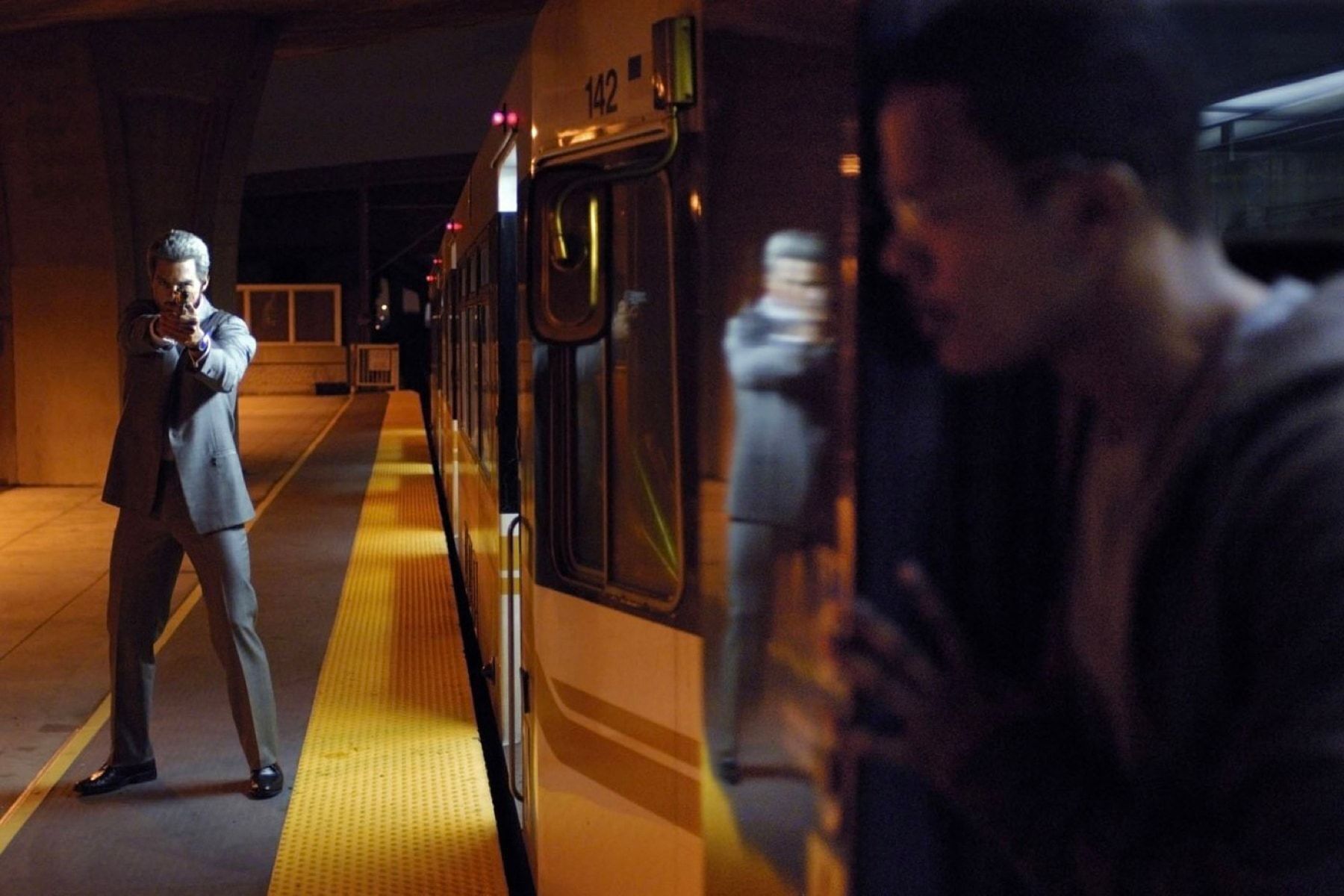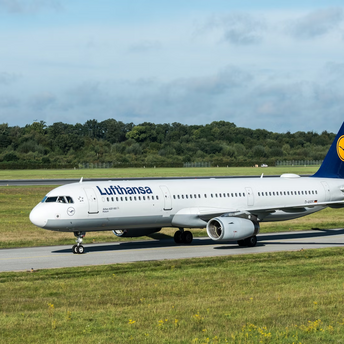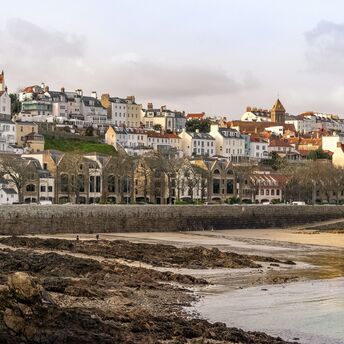Discover the Los Angeles Metro: Routes, Attractions & Insider Tips

If you’re planning to visit LA or live here and want to avoid the infamous traffic, the Los Angeles Metro might just be your best friend. With its modern trains, affordable fares, and routes connecting some of the city's most iconic spots, the Metro is a surprisingly underrated way to get around. Here’s everything you need to know, with a few fun details along the way.
Los Angeles Metro Routes and Lines
Quick Info:
- The Metro has six major lines: Red, Purple, Blue (A), Gold (L), Expo (E), and Green.
- Each line connects different areas of the city, making it easier to navigate sprawling LA.
Let’s Dive In: The Metro consists of six major lines—Red, Purple, Blue (A), Gold (L), Expo (E), and Green—each designed to connect key areas across LA. Before setting off, it’s helpful to download a Los Angeles Metro map to plan your trip. The lines are color-coded, making navigation straightforward even for first-time riders.
If you’re wondering how to get to Universal Studios by Metro, take the Red Line to Universal City Station and hop on the free shuttle. For beach lovers, the Expo Line takes you to Santa Monica, offering a convenient option for public transportation to Santa Monica. Meanwhile, the Blue Line connects Downtown LA to Long Beach, providing a scenic journey for anyone interested in discovering the coastline.
Schedules, Safety, and Accessibility
Quick Info:
- Trains operate daily from about 4:30 - 00:00 AM, frequency varies: 10-15 minutes.
- Generally safe, security cameras and Metro staff are present at most stations.
- All Metro stations are wheelchair accessible.
- You can bring pets, bicycles
Why This Matters: The Metro operates daily from around 4:30 AM to midnight, with trains running every 10-20 minutes depending on the time of day. For anyone wondering "Is the LA Metro safe?", the answer is generally yes. Stations are equipped with security cameras, and Metro staff are present to assist passengers.
For pets, they must be in secure carriers that can fit on your lap or under your seat. This makes it easy for smaller animals to tag along, but larger pets are not allowed unless they are service animals, which can accompany you without a carrier.
Bicycles are welcome, and most Metro trains have designated bike areas. However, it’s best to avoid bringing your bike during rush hours when trains are crowded. If you’re exploring the city, combining biking and the Metro is a great way to reach areas like Santa Monica or Long Beach.
Additionally, the Metro prioritizes accessibility. All stations are wheelchair accessible, If you’re driving to a station, you’ll find plenty of park-and-ride options, making it easy to combine public transit with your car—just check out Metro stations with parking in Los Angeles.
Los Angeles Metro Fare and TAP Cards
Quick Info:
- Single rides cost $1.75, and transfers within 2 hours are free.
- Day passes are $5; weekly passes are $18.
- Use a TAP card for all Metro services.
What You’ll Love: One of the Metro's greatest advantages is its affordability. How much is a Metro ticket in LA? A single ride costs $1.75, and free transfers within two hours make it easy to explore multiple destinations on the same fare. For frequent riders or day-long adventures, a $5 day pass is your best bet.
Children under 5 ride for free (up to two per paying adult). There’s no special Los Angeles Metro fare for older kids, but students can apply for discounted TAP cards to save money on their commutes.
Using the Los Angeles Metro TAP card is simple: purchase one at any station or through the app, load it with funds, and tap it at turnstiles before boarding. It’s a cost-effective alternative to LA’s notoriously expensive parking fees.
Best LA Attractions Accessible by Metro

Quick Info:
- Hollywood Walk of Fame and Universal Studios: Red Line.
- Santa Monica Beach: Expo Line.
- Downtown hotspots: Accessible via multiple lines.
Why This is Amazing: Imagine stepping off a train and being right in the heart of Hollywood. The Metro takes you to places you’d never think to access without a car. The Red Line drops you near the Dolby Theatre and TCL Chinese Theatre. Meanwhile, the Expo Line ends a block from Santa Monica Pier—ideal for sunset views and ocean breezes. You can also use the Metro to reach Universal Studios and vibrant neighborhoods like Pasadena. If you’re sightseeing, using the Metro is a great way to experience Hollywood by Metro Los Angeles while avoiding the hassle of traffic and parking.
Art and Architecture in the Metro
Quick Info:
- Many stations feature public art through the Metro Art program.
- Notable stops: Union Station, Hollywood/Highland, Civic Center.
The Hidden Gems: The Los Angeles Metro is more than a transit system—it’s a showcase of art, architecture, and history. Opened in 1990 with the Red Line connecting Downtown LA to Hollywood, the Metro represents a significant shift for a city long dominated by car culture. While its modern network spans six main lines, the Metro also draws from LA’s history, with some tunnels tracing back to the 1920s when an earlier subway system briefly operated.
Beyond functionality, the LA Metro apart is its dedication to art. Thanks to the Metro Art program, nearly every station is a mini art gallery, showcasing over 300 pieces of public art. These art installations in LA Metro stations range from vibrant murals to sculptures and mosaics, transforming your commute into a cultural experience. At Hollywood/Highland, for instance, film reel-inspired designs celebrate Hollywood’s Golden Age, while Union Station’s Spanish colonial revival architecture cements its reputation as one of the most beautiful metro stations in Los Angeles.
These unique touches make the Metro not just a way to travel but a journey in itself, whether you’re following the Los Angeles Metro map to Hollywood by Metro Los Angeles, heading to Santa Monica, or even spotting familiar stations featured in iconic movies.
Movies Filmed in the LA Metro

Quick Info:
- Films like Collateral and Terminator 2 used the Metro as a backdrop.
- Many stations are iconic filming locations.
Why It’s Cool: The Los Angeles Metro isn’t just a convenient way to explore the city or visit iconic spots like Universal Studios or Santa Monica; it’s also a star in its own right. Over the years, the Metro has made cameo appearances in numerous blockbuster movies, showing off its tunnels, platforms, and trains. If you’ve ever wondered, where is was filmed, while watching a movie, chances are the answer might be the LA Metro.
Remember "Speed" (1994) with Keanu Reeves and Sandra Bullock? The movie’s adrenaline-pumping finale takes place in the Metro’s Red Line tunnels. It’s one of those moments where you’re simultaneously impressed by the action and thinking, "Hey, I’ve been there!" The Union Station, one of the most beautiful metro stations in Los Angeles, has also starred in countless films. From its grand halls in "Blade Runner" to its noir aesthetic in "The Dark Knight Rises," Union Station’s iconic architecture steals the show. Even the eerie vibes of the Blue Line station made an appearance in "Collateral," giving Tom Cruise’s thriller an extra layer of tension.
For those into pop culture, it’s easy to see why directors love the Metro. The mix of historic charm, like at Union Station, and the sleek, modern vibes of other lines make it perfect for everything from dystopian sci-fi to gritty urban dramas. Next time you’re figuring out how to use the Metro in Los Angeles or scanning the Los Angeles Metro routes and schedules, remember you’re traveling through a set that’s been part of Hollywood history. And if you’re on the Metro train from Los Angeles to Long Beach, just imagine what epic scenes it might inspire in the future.
Tips for Riding the Los Angeles Metro
Quick Info:
- Plan your route with theLos Angeles Metro map.
- Buy or reload your TAP card in advance.
- Avoid peak hours if you want a quieter ride.
Pro Advice: When using the Los Angeles Metro, timing is everything. Locals will tell you to avoid riding during rush hours—roughly 7-9 AM and 4-6 PM—when trains are packed with commuters. If you can, plan your trips during quieter hours for a more relaxed ride and a better chance to snag a seat.
Another pro tip: always stand on the right side of escalators, leaving the left side clear for those in a hurry. And if you're unsure about the Los Angeles Metro routes and schedules, don’t hesitate to ask a station attendant or a fellow passenger. Most Angelenos are friendly and happy to help. Finally, bring a pair of headphones or a book—it’s the perfect way to pass the time as you ride to top attractions like Hollywood or Santa Monica. Riding the Metro isn’t just about getting from point A to B; it’s a chance to experience LA like a local!
Why Take the Metro in Los Angeles?
Let’s be real: LA traffic is infamous, and parking fees can drain your wallet. The Metro offers a stress-free, eco-friendly, and budget-friendly alternative. It’s a hidden gem in a city dominated by cars, the Los Angeles Metro offers a unique perspective on the city, combining convenience with cultural experiences. Connecting you to everything from beaches to museums, from exploring Hollywood by Metro Los Angeles to admiring art installations in LA Metro stations, it’s a ride that blends functionality with adventure. Whether you’re a tourist or a local, the Metro is an affordable, safe, and surprisingly enjoyable way to navigate this sprawling city. Next time you’re in Los Angeles, consider ditching the car and hopping on the Metro. Who knows—you might just discover your new favorite way to explore LA!



















